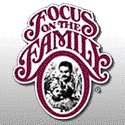About SALT
Information





Our Award!







The life of a baby begins long before he or she is born. A new individual human being begins growing in the mother's uterus at fertilization, and if the baby's life is not interrupted, he or she will someday become an adult man or woman.
Day 20- Foundations of the brain, spinal cord and nervous system are already established.
Month 2
Day 40- Brain waves can be detected.
Month 3
9 Weeks- Fingerprints are evident and will never change. The baby now sleeps, awakens and excercises her muscles energetically: turning her head, curling her toes and opening and closing her mouth.
The palm, when stroked, will make a tight fist. The baby breathes amniotic fluid to help her develop her respitory system.
Month 4
Month 5
Month 6
Oil and sweat glands are functioning. The delicate skin of the growing baby is protected from the waters in the amniotic sac by a special ointment called "vernix".
Month 7
The baby now uses the four senses of vision, hearing, taste and touch. She can recognize her mother's voice.
Month 8
The skin begins to thicken, with a layer of fat stored underneath for insulation and nourishment. Antibodies increasingly build up. The baby absorbs a gallon of amniotic fluid per day; the fluid is completely replaced every three hours.
Month 9
Toward the end of this month, the baby is ready for birth. The average duration of a pregnancy is 280 days from the first day of the mother's last menstrual period, but this varies. By this time the infant's heart is pumping 300 gallons of blood per day. The child triggers labor and birth occurs. Of 45 generations of cell divisions before adulthood, 41 have taken place. Four more will come during the rest of childhood and before adolescence.
all information from "She's a Child Canada" 1994
Month 1
Day 1- The sperm joins with the ovum (egg) to form one cell. This one cell contains the complex genetic blueprint for every detail of human development: the child's sex, hair and eye colour, height, skin tone etc. The fertilized egg travels down the fallopian tube into the uterus, where the lining has been prepared for implantation.
Day 21- The heart begins to beat.
Day 28- The backbone and muscles are forming: arms, legs, eyes and ears have begun to show. At one month old, the embryo is 10 000 times larger than the original fertilized egg- and developing rapidly. The heart is pumping increased quantities of blood through the circulatory system. The placenta forms a unique barrier that keeps the mother's blood separate while allowing food and oxygen to pass through to the baby.
Day 35- The preborn baby has all her fingers.
6 Weeks- The brain is controlling 40 sets of muscles as well as the organs. The jaw forms, including teeth buds in the gums. The eyes seal to protect the developing light-sensitive eyes. They will reopen in the seventh month.
The stomach produces digestive juices and the kidneys have begun to function. The baby's body responds to touch.
By the end of this month, the baby is eight to ten inches in length and weighs half a pound or more. The ears are functioning, and there is evidence that the baby hears the mother's voice and heartbeat, as well as external noises. The umbilical cord has become ans engineering marvel, transporting 300 quarts of fluids per day and completing a round trip of fluids every 30 seconds. The mother usually begins to feel the baby's movement during this month.
Half the pregnancy has now passed, and the baby is about 12 inches long. If sound is especially loud or startling, the baby may jump in reaction to it. Babies born at this stage of development (19-20 weeks) have survived.
Worldwide, millions of unborn babies are killed each year. In the United States over 32 million unborn babies have been killed in the 21 years since abortion was legalized and more than 1.5 million are killed each year.
 |
This Pro-life site is owned
by S.A.L.T. JOIN the ring! |
| [Skip Prev] [Prev] [Next] [Skip Next] [Random] [Next 5] [List Sites] | |
